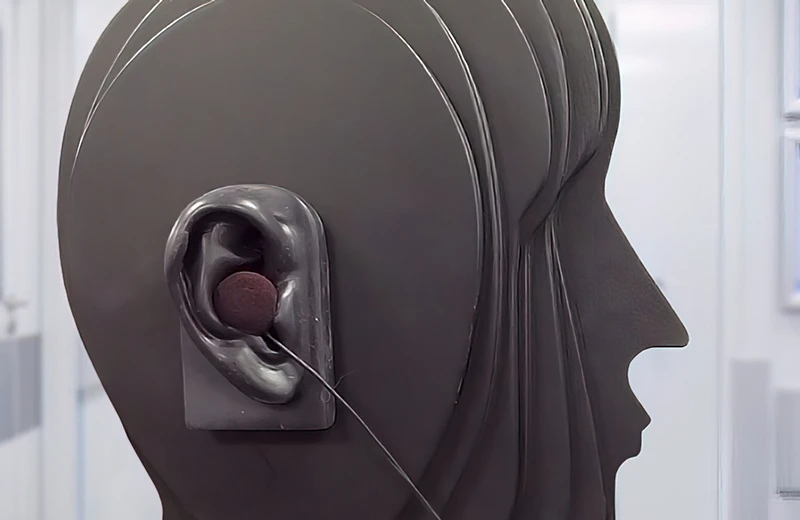Have you ever wondered how it is possible for the human brain to so accurately detect the location of a perceived sound? We only have two ears, yet somehow we are able to discern the differences between sounds originating from any direction within our 3-dimensional environment – in front, behind, above, below, left or right. How is this possible? And can we therefore simulate this effect in order to artificially reproduce the experience of perceived 3-dimensional sounds, as opposed to the normal left/right experience we are accustomed to in traditional stereophonic speaker set-ups, without simply adding extra speakers?
The answer is yes we can. Directional perception of sound occurs by our brain’s ability to decode the subtle differences in information received by our in-built stereo receivers – our left and right ears. Binaural recording is a recording technique that uses two microphones to mimic the human auditory system, utilising the exact same conditions that create the phenomenon of binaural localisation in humans. And so, with the acquisition of a pair of binaural microphones, a portable Tascam field recorder and a dummy head named John, film maker Bebe Bentley and I spent one evening carrying out some binaural recording tests at the University of Sussex. Here are the results (please note that headphones must be worn in order to perceive the effect):
#1: Binaural recording in a dead room.
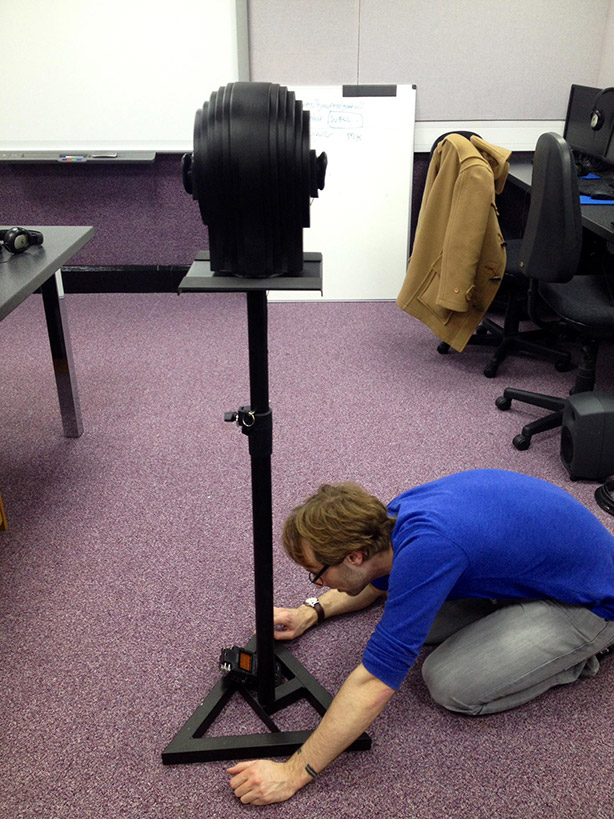
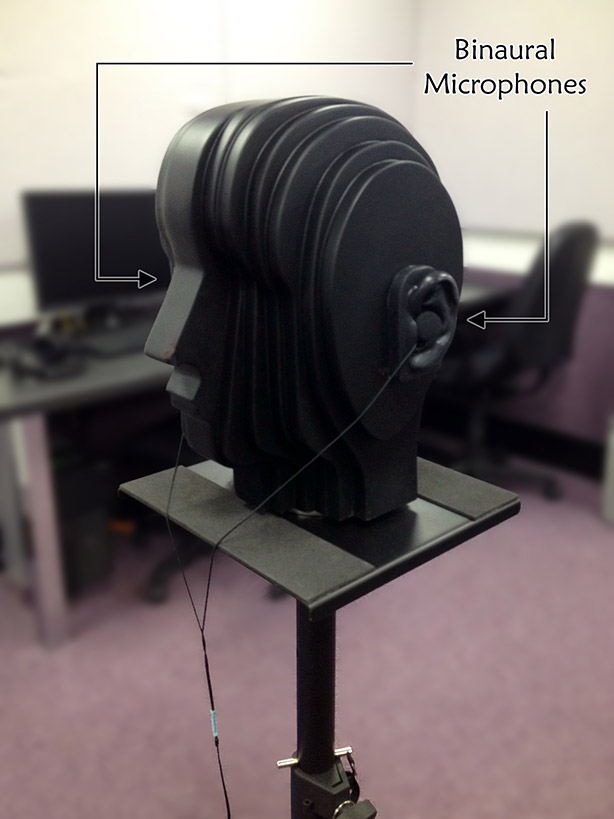
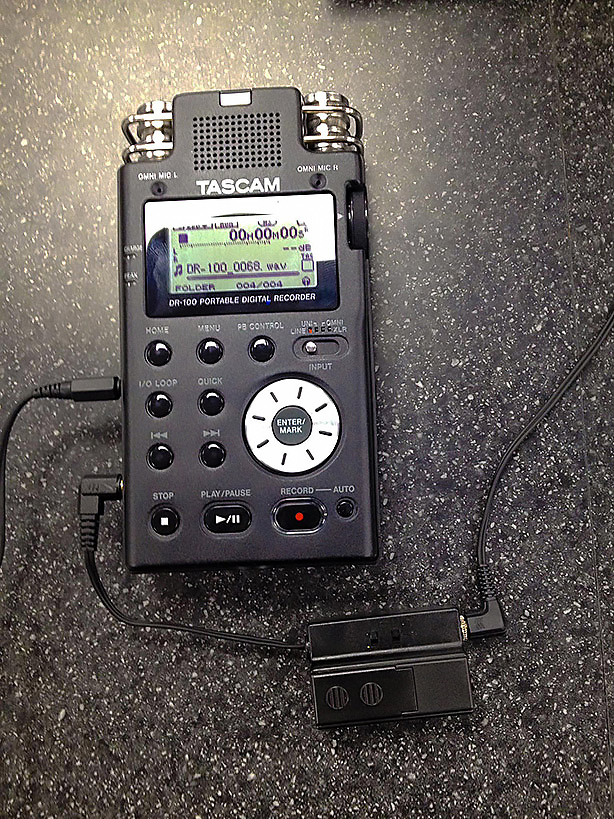
In the directional perception of sound there are two phenomena at work: Binaural and monaural localisation:
Binaural Localisation
Binaural Localisation refers to the discrepancies in the characteristics of a sound wave arriving at the closest ear, and then the farthest. Your brain is sensitive to the discreet time difference between a sound hitting the nearest ear and the farthest ear – referred to as the Inter-aural Time Difference (ITD) – as well as the slight change in volume between the two ears – the Inter-aural Intensity Difference (IID). If sound originates to your left, your head acts as a barrier or filter and reduces the level of sound heard in the right ear.
Monaural Localisation
Monaural localisation mostly depends on the filtering effects of physical structures. In the human auditory system, these external filters include the head, shoulders, torso, and outer ear or “pinna”, and can be summarized as the head-related transfer function. Sounds are frequency filtered specifically depending on the angle at which they strike the various external filters.
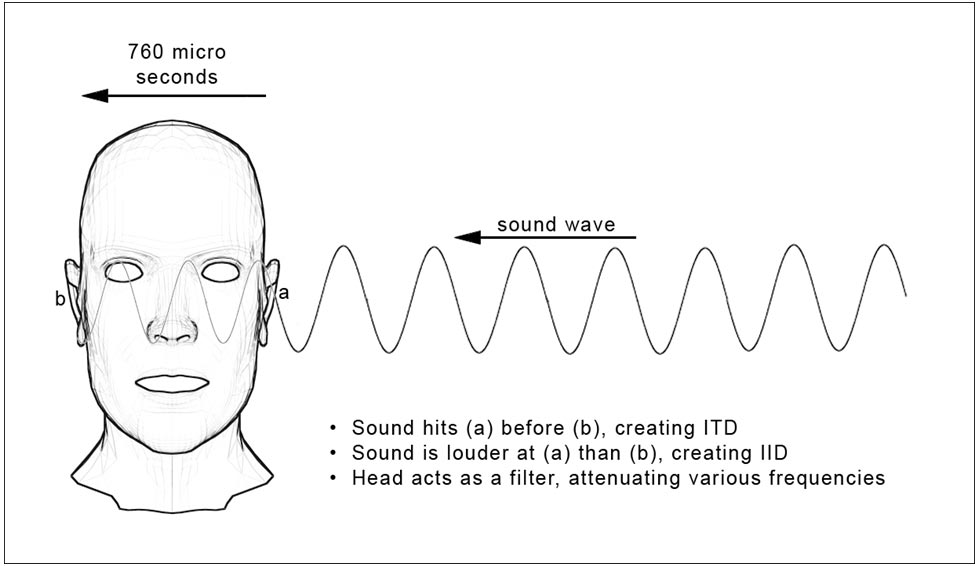
Binaural recording of the kind Bebe and I carried out works by the use of two omni-directional microphones fitted to a dummy head, thereby simulating as realistically as possible the actual physical location of the human ears, combined with the filtering incurred by the human head. The same effect would be achieved by placing the microphones in your own ears, which would make for an interesting audio experience were you to then simply walk around an urban environment or visit a concert. In these instances it would be possible to accurately record exactly what you heard in these situations, complete with directional perception of the ambient noise, in order to later recreate that exact sensation through a pair of headphones. This, however, is perhaps a test for another day. Here we simply affixed the microphones into John’s ears and proceeded to move objects around and make various noises such that the illusion of directional perception is created.
It is however important, for the effect to be fully realised, that headphones are worn. This is because, on replay, the left ear must receive only the signal recorded by the left microphone, and the right ear only the signal from the right microphone. Playback through speakers destroys this effect by obscuring the stereo field emitted by the left and right speakers.
What strikes me as odd about the experience of listening to this recording is the realism it invokes. When hearing Bebe and I running around the room it is as if ghost figures are appearing in front of you. With your eyes closed you can almost “see” the people. This demonstrates just how unaware we are of the subtleties of our sensory information in building our picture of the world. The next time someone supposes some supernatural bullshit to describe how they “felt a presence in the room”, remind them how easily our senses can be fooled.
So there we are. Artificial directional perception by binaural recording. Now, if only I could find a practical application…


